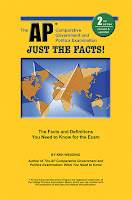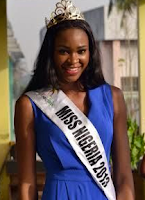Cozy retreat for the Chinese elite
Most of this is historical trivia, but it also offers clues about how the elite in China rule.
Where China’s top leaders go in summer and in secret: a brief history of Beidaihe
Teaching Comparative blog entries are indexed. Use the search box to look for country names or concept labels attached to each entry.
 Just The Facts! 2nd edition is a concise guide to concepts, terminology, and examples that will appear on May's exam.
Just The Facts! 2nd edition is a concise guide to concepts, terminology, and examples that will appear on May's exam.
Just The Facts! is available. Order HERE.
Amazon's customers gave this book a 5-star rating.
Where China’s top leaders go in summer and in secret: a brief history of Beidaihe
When state radio reported on Wednesday that Premier Li Keqiang met United Nations General Assembly President Maria Fernanda Espinosa in Beidaihe, it was the clearest confirmation that the annual summer gathering of China’s most influential politicians was taking place at the northern Chinese seaside resort.
It was Chairman Mao Zedong, one of the key founders of the People’s Republic in 1949, who initiated senior party and government officials in Beijing to work at the famed seaside town of Beidaihe as early as 1953.
Instead of the capital, all crucial meetings in the summer were held in Beidaihe from then on. In August 1958, party elites headed by Mao made two key decisions during an expanded meeting of the party’s Politburo held in the resort…
Mao at Beidaihe
The closed-door meetings were suspended for nearly two decades in the aftermath of the outbreak of the notorious Cultural Revolution in 1966.
Late paramount leader Deng Xiaoping came to power after Mao’s death and decided to resume the annual gathering in 1984.
Party elders and most members of the party’s decision-making Politburo gathered in Beidaihe to come up with the party’s new leadership a few months ahead of its five-yearly national congress, which brought major power reshuffles in late 1987.
Deng was effectively pulling the strings behind the scenes in power plays within the party even when he held no key position except the head of the Central Military Commission with the People’s Liberation Army…
Former President Jiang Zemin followed the rule set by the party’s revolutionary veterans after Deng’s death in 1997.
That summer, all key reshuffles of the next Politburo, and Jiang’s five-yearly work report draft, to be presented at the Communist Party national congress late in the year, were deliberated among party elders and political heavyweights at Beidaihe before they gave their blessing…
Politburo HQ in Beidaihe
By the time Xi Jinping took the party’s helm in late 2012 – even though he had two living predecessors who might have watched over his shoulder, during a general decline of party elders’ influence and Xi’s consolidation of power – the political significance of the Beidaihe gathering, now described as the leadership’s retreat, has ebbed.
The source close to a party elder said: “Unlike the practice in 1980s and 1990s, in which there was at least one issue or two scheduled to be discussed in Beidaihe, nobody knows for the time being whether there is any agenda or meeting in the resort, although party elites are supposed to be all there to spend their summer holidays.”
Teaching Comparative blog entries are indexed. Use the search box to look for country names or concept labels attached to each entry.
 Just The Facts! 2nd edition is a concise guide to concepts, terminology, and examples that will appear on May's exam.
Just The Facts! 2nd edition is a concise guide to concepts, terminology, and examples that will appear on May's exam.Just The Facts! is available. Order HERE.
Amazon's customers gave this book a 5-star rating.




Comments
Post a Comment